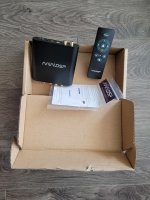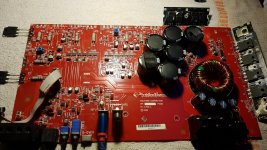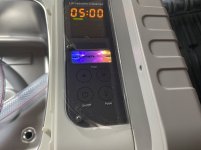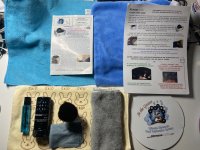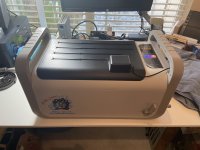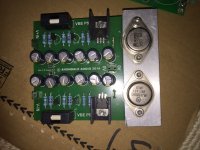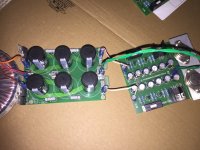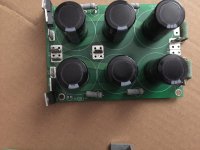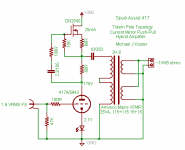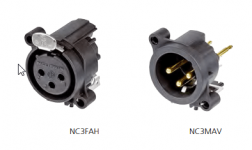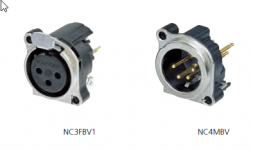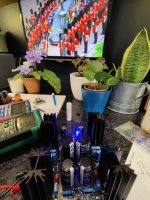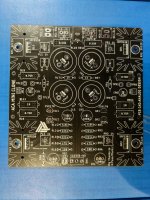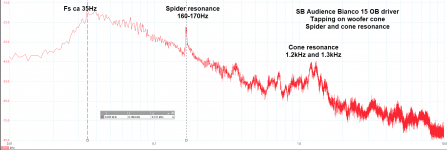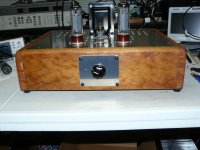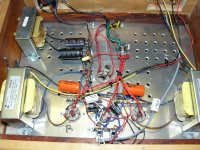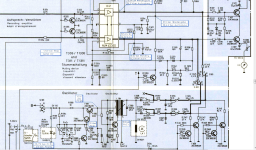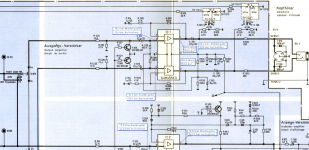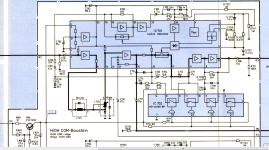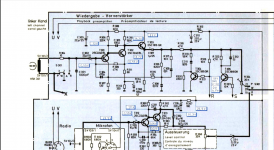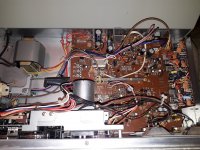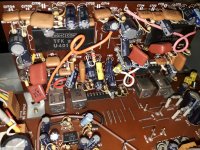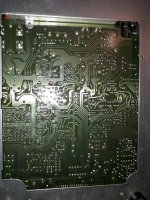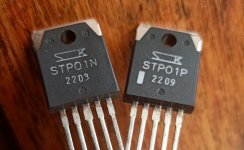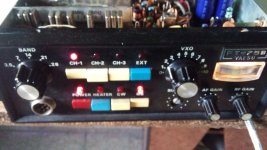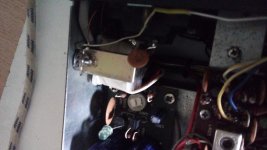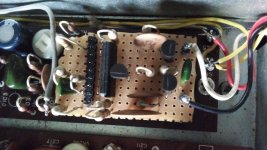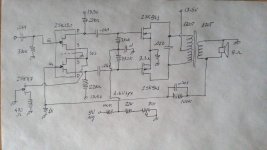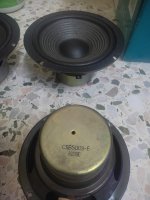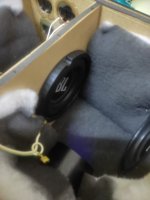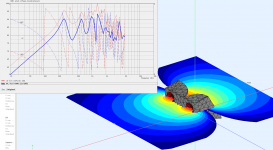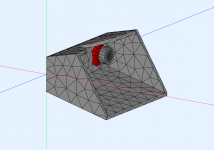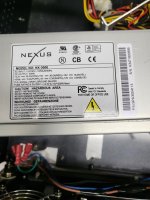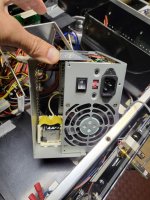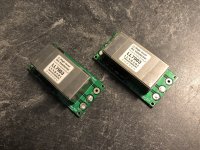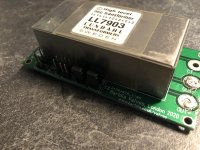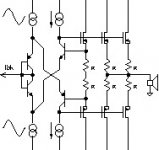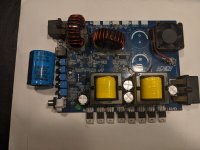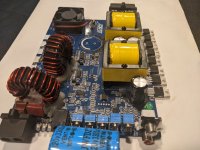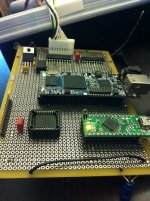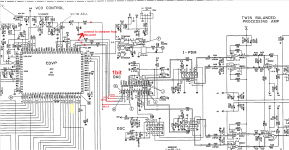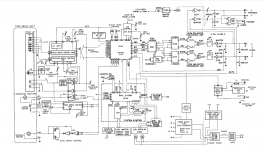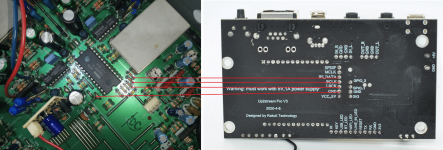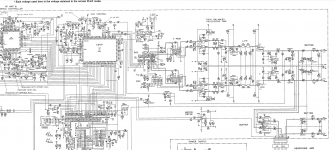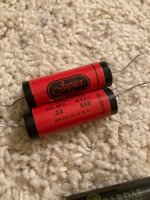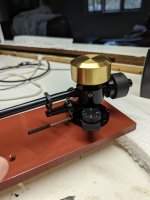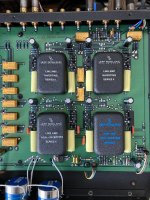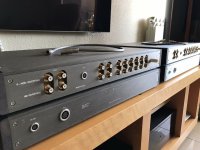Preface:
I don't truly need any new speakers and currently only really listen to one pair, my large 5cu.ft TD15M + CD-waveguide boxes with DSP and dual 50ASX2 boards. This is in my living room and is used for TV, movies and music. On my home PC I use headphones (MDR-7506) as it is usually late in the evening. I do have a small setup at my work office that I listen to sporadically, depending on whether I get to sit there a bit or have to run around the place all day. The speakers were small reflex for the titular FF85WK. These are OK, but I never really designed anything decent for this driver (did lots of wacky and unorthodox boxes for them OTOH) and neither have I ever done a WAW, so why not?
Here's the build:
In case anyone's just here for pics or a visual TL;DR.
😉

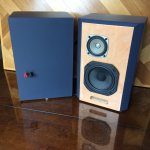
How this came together:
Due to the aforementioned lack of need for new speakers, I was not going to invest much money into this. So I wanted to see if I could design something from the modest stock of parts and materials I have at home.
To put the first "W" in WAW, I had three options:
- Peerless 830869 8": I had these in MLTL in my living room before bringing the TD15M juggernauts up from the basement. The XO I designed back then wasn't so great, so I parted these, but kept everything. These would be good for a WAW and I may yet make one with them, but I wanted to go smaller with this project and I don't see these in anything less than 18L or so.
- Faital Pro 6FE100 6": Their suspension is stiffer (lower Cms) than specified, so Fs and Qt are predictably much higher and not usable in a vented box. Even sealed with Qtc~1.0 is larger than I want for this project and even then, f3/6/10 are fairly high.
- Fane Studio 5FRK 5": I got a good price for these a while back thinking I could use them with the parted HF module (BMS 4540ND + 6" JBL PT-waveguide) from the MLTL. That plan did not pan out. I would need to notch a ~4kHz peak on the driver, which I'd be willing to, but the directionality mismatch was more than I cared for considering the complex crossover. While it truly is more of a midrange driver (medium-hi Fs and low Qt), it also has a quirk around 800Hz-1kHz, see below.
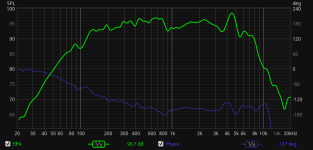
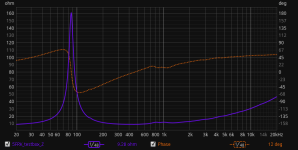
It shows up on both frequency and impedance response. To be fair it is present on the spec sheet and I knew about it. I did not investigate whether it is audibly deleterious. This should be attenuated or out of the way for all but the highest "typical" WAW crossover frequencies.
From my T/S parameter measurements, I modeled various enclosures in Hornresp and had a few options in the 6 to 9 liters range, just about what I'm looking for.
The mid-tweet chamber:
I'd previously tested the FF85WK in a straight 3" pipe, 12" of length, stuffed, to be used as a mid-TL to damp the impedance peak and had great results, quite similar to what Dave P10 achieved in some of his own builds. I knew it would be more difficult to implement something like this in an enclosure of the desired size, so instead went with a sealed chamber. I used a 4" ABS pipe union (4.5" ID). I caped it off with a, well, pipe-cap for a volume of 1 liter and tested different amounts of fiberglass insulation and go the following.
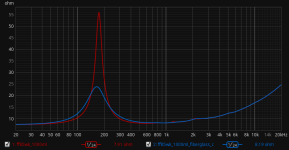
The mid-TL gets the magnitude lower, but the single peak of the sealed chamber is at a slightly lower frequency. This should work out since my planned crossover isn't too low, as we will see next.
The crossover:
I have a small quantity of caps, coils and resistors over a typical range of values and really was aiming for something usable from my pile. I think I succeeded, though not without compromise, but that can be changed if I ever so choose. I really was limited by the inductors, as I'll explain.
I knew I could not aim for something as low as 250-300Hz; I don't have monster coils nor do I plan to shell out for them. I thought ~650Hz was nice as it is roughly the geometric mean of the human hearing range - not that there is anything magic about crossing there. I had a ~10L enclosure I used for testing before, so just gave it a new baffle with some 0.25" hardboard, slightly braced, added some lagging and stuffing, mounted the 5FRK and the mid-tweet chamber. I quite fortunately ended-up having the exact width of my final enclosure, which I did not really get to pick.
After a few sessions of annoying everyone including - especially - the dog with sine sweeps, I had something decent.
The 5FRK got a Zobel and its low-pass is 2nd order, via two coils 1.5mH + 1.6mH summing to 3.1mH and a 30uF shunt capacitor. The coils are small-gauge and combine to a DCR of slightly more than 2 Ohm, which isn't so bad here. The 5FRK is already more sensitive than the FF85WK and I've never used high amounts of BSC, so can deal with a slight reduction of its SPL. The raise to its Qts of 0.32 is not unwelcome too, considering its medium Fs. The 2nd order really is necessary on the 5FRK unless I notch its 4kHz peak. I tried 1st order, but it affected the response too much despite being seemingly far in the cut-band.
The FF85WK would have to be high-passed 1st order, as I was then out of suitable inductors to give it a 2nd order. 30uF achieved the intended ~650Hz target, but there was a bit more interaction from the impedance peak than I wanted. I ended-up using a shunt 16 Ohm resistor to further damp the peak as seen by the capacitor. It worked well enough without lowering the minimum impedance too much.
Here what this looks like.
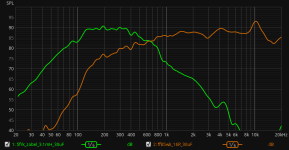 The enclosure:
The enclosure:
Using Hornresp, I was considering a straight Augspurger DCR, as well as one with modified Vb/Fb ratios, but ended-up going with a simple reflex. 7-8 liters tuned around 60Hz looked good to me, with a well-damped response. Since this project has been about using what I have on hand, the same went for the boxes. Remember the dismantled Peerless MLTL's? I'd built these from 18mm BB-ply and I don't need to tell you how the price went up considerably for this material. They happen to have a CSA of 12" x 7.5", suitable for a bookshelf facade. I thus took two 6" sections from them on my table saw, giving me just under 9 liters of gross Vb to work with. The mid-tweet chamber takes away 1.25 liters alone. The enclosure is roughly of GR proportions, only ~0.25" deeper, but the FF85WK chamber, bracing, crossover board and vent make it highly irregular in shape.
For the new back and front baffles, I went with 11mm "birch" ply. Ok, that next bit I feel bad about. I'd always bought 11mm BB-ply at the same big-box store for around 20$ for a handy-panel, 2x4 feet, but it's been many years since my last purchase. I knew the price had gone up to about 40$ for this item, just walking by the aisle. So I go there, find a panel with clean outer veneer, in the same bin it's always been, pay up and go home. They used to call it "Russian birch ply" IIRC, but now it was just "birch ply", but I did not pay attention to that, though I should have. When I started to cut it, it smelled like pine and comparing it to old cutouts of actual BB-ply I had, I noticed 2 or 3 fewer lamination. So I paid a premium for birch-faced pine ply. The stuff isn't unusable for a small speaker, but I still feel I've been had. I had to use it anyway as I'd already cut it up.
The ABS mid-tweet chamber is glued to the baffle with epoxy, bracing it, as well as epoxied to the side and top and braced to the far side. There is a horizontal holey-brace tying the sides and rear baffle together, about half-way up. I think I made the most of my pricey cheap ply... I've added some felt on various internal surfaces, but have to wonder how much it helps for a driver playing mostly below 650Hz. The mid-tweet chamber's fiberglass filling and felt lining nearer to the driver is likely sufficient for the FF85WK, which also has a healthy rebate to its mounting hole.
I went with a slot vent, 3" x 0.75", about 4.25" long. I assume my final Vb is closer to 7 liters and it is tuned to 58Hz.
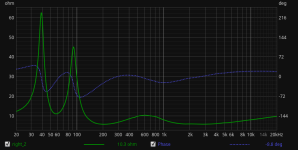
There may be some R in the vent if I go by the above system Z response. We can see the 16 ohm shunt on FF85WK does not lower impedance to much, never getting below 5.8ohm.
The 5FRK is horizontally centered and vertically at GR, while the F85WK is horizontally at GR, coincidentally equidistant from top and nearest side, not ideal but I believe I partly mitigated this with the bevels.
I had planned on large lateral bevels to show-off the BB-ply end-grain, but that's not happening with the ply I got, though I still want the bevels. These are 1.41" on the sides and 0.71" at the top, cut on the table saw. I had to fill some voids in the pine ply there. The FF85WK at the very least looks like it is not equidistant to side and top anymore. I did not measure a before and after the bevels horizontal and vertical polar response, that would have been too long for something I was not going to change at that point.
The outer birch veneer still looks good, so I wanted to at least keep that. I painted the rest with porch & floor paint, poppy-seed colour. I primed with BIN shellac before that. Runoff are visible on the baffle where I assumed I could sand it out, but the veneer is incredibly thin. The tung oil made that particular cosmetic defect a bit more apparent. Oh well. I think the overall look still turned out good.
Final measurements:
5ms gated response at 50cm, both enclosures:
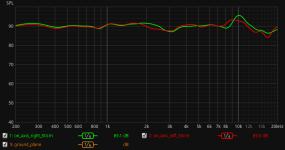
Ungated response at 25cm:
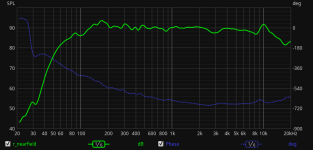
Not certain how meaning full it is, but here is an interior nearfield ground-plane response, hoping to demonstrate the LF behaviour:
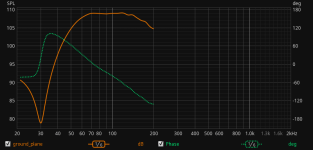
It's close to the HR simulation to be fair. I'm just not sure what the 30Hz dip is about, but it did not show-up on a lower-res sweep from 20-20kHz.
Step response:
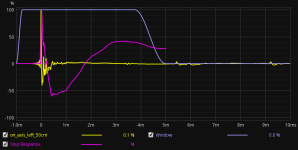
We here see I had to invert one driver to allow for the asymmetrical slopes. I had to compromise here if I was to avoid buying more inductors.
😉 I also thought this more acceptable than the somewhat worse response of the 5FRK with a 1st order.
Polar response:
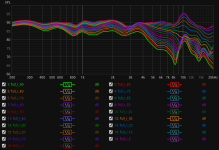
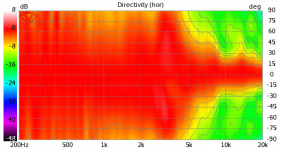
It is mostly that of the FF85WK naturally, plus the specific enclosure, as the crossover is well before any of the drivers become directional.
All in all a pretty humble design and build IMO, though I did spend quite a bit of time on it. WAW's may be simple, but they're not necessarily easy. I learned some more as always and am more aware of my design choices and compromises.
This post turned out larger than I intended and it's late and I can barely think or type anymore. I'll post subjective evaluation (FWIW) anon.
